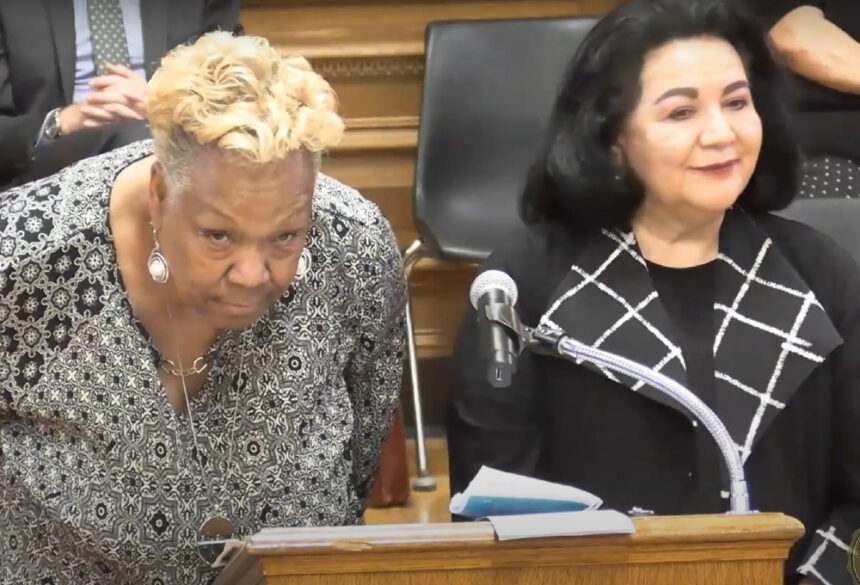Joyce Seals recalls January 2009 for two reasons.
- During her tenure as mayor, she was in Washington for President Obama’s historic first inaugural.
- In her D.C. hotel room, she took an urgent phone call. Gov, Jennifer Granholm and the Legislature were expanding the Kalamazoo Promise college scholarship program, and for a new Saginaw Promise to take root, local action was required. Now.
Needed steps indeed were taken, resulting in $1.3 million in college aid for 728 students who have resided in the Saginaw School District, which includes the city and Zilwaukee-Kochville territory.
Stability begins at the top. Saginaw Promise shares office space with the Saginaw Community Foundation in Morley Plaza behind the Temple Theater, and Deborah Sanchez has served as director ever since the 2012 startup. Seals remains as Promise chair in addition to her Board of Education membership.
The duo reported an update to the City Council during the Aug. 12 meeting.
Why keep the council posted when scholarships would seem like a school board matter? Because as Sanchez and Seals explained, state officials at the time framed the Promise Zones in terms of supporting municipal urban centers against population loss. Saginaw’s zone is the boundaries of the city school district, so an incentive for families to stay is that they won’t qualify for Promise “place-based” aid if they move, for instance, to Saginaw Township, or to Bridgeport, or to Carrollton, or to any locale outside the borders.
Kalamazoo became the pioneer when a quintet of millionaires came forward, Seals noted, while Saginaw in comparison requires more of a widespread team effort.
- Minimum grade-point average, GPA? None is etched in stone. Students simply must meet the requirements of the college where they apply for enrollment.
- Family income caps or limits? Again, there are none. A pupil’s parents could be millionaires or comparative paupers, so long as they maintain residences within the city district.
- Don’t they always say good jobs can be found without a college degree? Yes, but even some of the vaunted tech- or voc-ed high-demand openings may require at least a course or two beyond high school, and Saginaw Promise covers those scenarios. Sanchez said that as soon as the close of this decade, the ratio of jobs that require at least some college will rise to 70 percent.
Saginaw Promise is a last resort, to the point where recipients must demonstrate they have pursued other sources of scholarship aid. This is a cornerstone of the application process, Sanchez noted. Promise funds often fill gaps for dorms, meals, fees, and other expenses not covered by traditional grants.
Seals and Sanchez asserted that teen dropout rates and youth crime both have declined during the Promise years in Saginaw and elsewhere. A top challenge, locally and nationally, is keeping students in college once they start.
At present, scholarships are up to $2,000 per semester for two years, total $8,000. Leaders will consider expanding, with the onset of free community college provided statewide.
For more info, please visit saginawpromise.org.
To view the City Council discussion, go to 1:11:0 on the YouTube video of the Aug. 12 session.










